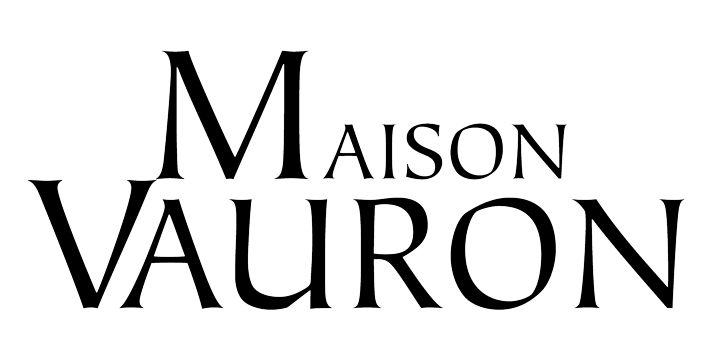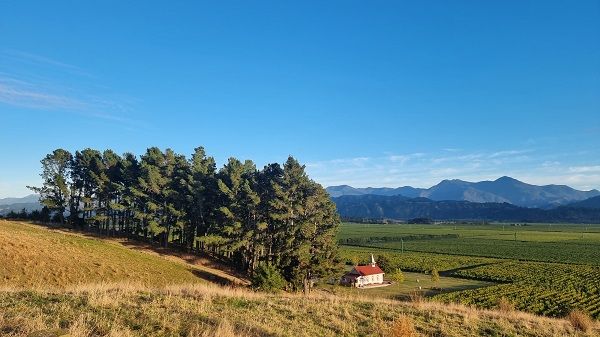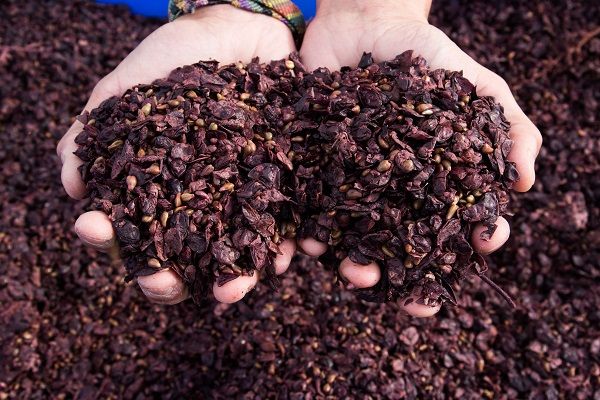Meet the Winemaker: Clos Henri
A journey born and honed by 10 generations of winemakers, Clos Henri is home to extraordinary, organic Marlborough wines. Nestled in the foothills of the Wairau Valley, carved by powerful glacial and tectonic forces, the Clos Henri Estate sits upon some of Marlborough’s most fascinating soils.
Headed by members of the famous winegrowing family of Henri Bourgeois, from Sancerre, France, the Estate has been meticulously cared for since its establishment in 2000. Drawing on over 200 years of winegrowing expertise from the family, they craft organic wines that are textural and elegant, paying homage to unique soil types.
We spoke to Damien Yvon, General Manager and Head Winemaker about his role as the face of Clos Henri.

MV: Clos Henri’s journey took a significant turn when Henri Bourgeois acquired two hectares on the hills of Chavignol in the 1950s. Could you share insights into his passion for wine and the origins of his desire to produce it?
DY: Henri Bourgeois together with his wife Solange have really been pioneers for the appellation Sancerre already back in the 1950’s. While the very steep slopes of the village of Chavignol were very difficult to cultivate (hence the name Cote des Monts Damnés translating as Damned Hills), Henri knew that those slopes would consistently show character, minerality, density in the wines. Early in the 1970’s, Henri was also particularly paying attention at the wealth of diversity of terroirs Sancerre was offering from the Clay-Limestone based soils on the western side of the appellation where their beloved village of Chavignol is situated to the Flinty (“Silex”) soils in the East end. Often local winemakers at the time would blend wines from both soil origins. Henri became very intrigued by the singularity of each soil and what it expressed in the wines. While the clay-limestones were already a very appealing style on its own offering fruit, soft minerals and delicate structure, the wines from the Flinty soils seemed to often show much tension, restraint making the wines less approachable especially in its early stage of maturation. Late 1970’s, Henri was the first producer in the region to experiment using an older barrel to ferment and age wine from flinty soil on its own. Henri discovered the benefits of the barrel helping to make wines from the flinty soil more approachable. He went on in 1985 to buy his first new barrel and experiment again. Unfortunately, he never enjoyed the result of his experiment as he passed away not long after the vintage 1985. However, his son Jean-Marie and Rémi carried on the legacy of Henri always paying particular attention to each soil expression.
MV: When Jean-Marie and Remi Bourgeois inherited the estate, they were inspired to explore international wine regions. What specifically drew them to New Zealand, and why did they choose Marlborough?
DY: Early in the 1980’s, Jean-Marie was in charge of the winemaking and Rémi was the man of the land always in the vineyard. At this time, they already realised the necessity to start exporting their wines and diversify their market. Jean-Marie has been one of the key producers of Sancerre who helped develop the reputation of Sancerre on the international scene, travelling with his stones in his pocket bringing the terroir to the table of each of his customers while tasting his wines. While travelling extensively over the 1980s and 1990s, Jean-Marie met many producers from around the globe. The family’s fascination for other terroirs of the worlds offering fantastic wines grew over time. From the early 1990’s, the family started visiting wine regions around the world each year with an idea developing that they could one day become one of those exotic producers! Towards the late 1990’s as New Zealand was impressing the world with the export of its first fine wines and particularly the unique style of their Sauvignon Blanc, Jean-Marie and his family met New Zealand producers at trade fairs to discover more what was special about New Zealand. I have very recently had a conversation with Jim Robertson of Pernod Ricard telling me he first met the family at Vinexpo Tokyo and how the family so curious about his wines and what was happening in New Zealand. It was at another fair in London that Jean-Marie met John Buck of Te Mata. Jean-Marie told meet that John said to Jean-Marie: “ you should come to New Zealand”. The Bourgeois family visited New Zealand for the first time in 1999 to explore the country. Only 12 months later, they found the special slice of land that has now become Clos Henri.
MV: As a Single Vineyard producer, could you elaborate on the terroirs of your vineyard and their influence on the character and quality of your grapes?
DY: When looking to purchase some land, the Bourgeois family wanted to meticulously study the geology of the Marlborough region to find the right terroir that would allow them to achieve their goal. The Bourgeois family has always been admirative of the quality of the Sauvignon Blanc produced by local winemakers understanding the focus on the bold varietal expression of Sauvignon Blanc that we all know well nowadays. However, the Bourgeois family were looking to produce wines that would express their place, using the varieties Sauvignon Blanc and Pinot Noir as translator of the terroir they settled on. This vision brought them the upper part of the Wairau Valley past Renwick township, on the southern glacial terraces and clay hills. These soils, some of the oldest in the Wairau Valley combined with a slightly cooler climate, have allowed us to produce wines of elegance and depth supported by a distinctive minerality.
MV: Could you talk about the Pinot Noirs and Sauvignon Blancs you produce? Are there any unique processes or techniques you use that help your wines stand out?
DY: It is important to start in the vineyard. I often say one of Clos Henri’s key aspects that drives in part our wine style is the high-density planting (between 4,500 and 6,000 plants per hectare compared to 2,000-2,500 in the Marlborough region). The dense planting enhances competition between vines, encouraging them to develop a deeper root system. This deeper root helps the vine be more resilient towards fluctuations of seasonal climate (drought in particular) but it also helps vines grow by exploring different depths of the soils and extract a difference balance of nutrient which have a deep impact on our wine style. This contributes to a better back bone of the wines, and a unique minerality sourced from its subsoil. As we are also aiming for a moderate to low vigour viticulture (stressing vines), we experience a natural regulation of our yields which helps us gain density in both our Sauvignon Blanc and Pinot Noir. Vines are some of the very few crops that can handle stress (moderately!) very well and subsequently produce a superior quality product. After all those efforts are done in the vineyard and during the growing season, an absolute key decision is the picking date. We often hold the reputation for picking rather late in the season. This can be due to our location in the valley (slightly cooler) but we are always pushing maturity. This optimum ripeness limiting any green character sets the foundation for making fine wines that will have a great aging potential.
In the winery, our processes and techniques stay relatively simple and certainly not very technologic. For the Sauvignon Blanc, our main goal is to retain all quality parameters of our fruit using minimal intervention. One of our key processes is using time… often Sauvignon Blanc are bottled early not long after their fermentation stage. We feel it is important to leave the wines time to rest and mature and make full use of its lees deposited at the bottom of their vessels. Therefore each tank and barrel are stirred every 2 weeks over autumn and winter to resuspend the lees which help soften the wines and add texture. This process last between 4 to 8 months depending on each batch which will be part of different cuvées (Estate or Single Vineyards). Our aim is to preserve fruit character while developing texture.
The Pinot Noir fruit is also handled very gently. Depending on vintage typicity, we aim to keep at crushing time between 5 and 10% of whole bunch in the tank for maceration. We particularly enjoy the stem tannins part of the whole bunch portion as those tannins are one of the strongest antioxidant which help preserve freshness of the juice during the early stage of maceration prior to ferment. Over the whole maceration phase, we only practice small gentle pump-overs of the juice over the cap avoiding punch-downs. This technique allows us to only extract the riper tannins without forcing on any harder tannins to be released. This allows a natural softening of Pinot Noir at the later stage of its maturation. Post maceration, we have the option to age our Pinot Noir in different size vessels from traditional barrels to large oak vats. The decision is based on the characteristics of each parcel. Those gentle and detailed processes and decisions help each wine parcel develop its own character and express its own balance. Ultimately, we have always aimed to produce delicate age-worthy Pinot Noir, with a texture based on soft tannins
MV: In your view, what makes a good wine?
DY: This question can sometimes bring a complex answer!... keeping it simple, I would say what makes a fine wine (rather than good wine), is the deep and intimate understanding of our vineyard rooted on its terroir with all its subtleties. Each season that comes to us is like raising a child. It will be unique, it will need attention and patience and this care is what will bring the best fruit in the winery. In large, in the winery, things are often kept simple to reach the result of a fine wine… but a fine wine needs to have a character, a uniqueness, and most importantly, you always want a second glass of it!

MV: How has the changing weather patterns impacted your winemaking approach over the years? Have you faced any significant challenges?
DY: We are finding out the change in weather patterns have really been noticeable in the last 10 years. I recall well the 2014 vintage being quite wet towards the end. The oscillating natural weather patterns El Nino and La Nina have also much influence on our climate and we are learning to pre-empt them a lot better adapting our viticultural practices accordingly. We strongly believe we have to be proactive towards the management of these changing conditions.
Our commitment to organic practices and our biodiversity development programmes are key technical improvements that are helping to keep our estate in balance, limiting the affects of the high and the low of the climate, pest and diseases. There are many natural approaches we are currently studying with the goal to become more resilient over time. But overall, attention to details in the vineyard, open canopy and low yields are also important factors to reach a successful harvest.
MV: What would you say are the standout differences between French and New Zealand wines? Without bias, do you believe New Zealand wines have certain superior qualities?
DY: The terroirs in Sancerre and Marlborough are totally different. While Sancerre is dominated by limestone and clay, Marlborough is limestone free, with free-draining or clay soils. The climates are also different. Marlborough enjoys maritime conditions, many hours of Sunshine (2,400 per years) and great shifts in temperature from cool nights to warm days helping to preserve acidity and fruit flavours. In contrast, Sancerre enjoys more a continental climate with hotter summers but less sunshine hours (1,900 per years). In general, Sancerre tend to show a distinctive minerality and natural richness while Marlborough wines are more fruit forward.
Coming to the question of New Zealand having superior qualities, I need to moderate my answer!... I believe the lively fruit expression of New Zealand wines make them very appealing to our palate. New Zealand wines have defined their own characters without pretending to be someone else. I think this is an aspect the Bourgeois Family have really loved from the Clos Henri journey so far. But I think New Zealand needs to not lose sight of our ability to make some of the finest wines in the world. It simply takes a lot of time, hard work, consistency and an intimate knowledge of our land. 18 years on since I have joined the Bourgeois family and the Clos Henri team, each day I feel like it is the first day, we have to stay on the land, humble and committed to reach our goals. But our local team always feels the privilege of having close ties with the Old World, being reminded what it takes to craft wines that have depth, ageability, a sense of place and this minerality that we like so much.
MV: What is your go-to Clos Henri wine and why?
DY: It is like children, we loved them all and accept they are all different! But if I have to pick and showcase to friends and family what we do best, I would open our Single Vineyard Otira and Waimaunga Sauvignon Blanc that express so much of their terroir individuality. I often received the feedback: “is this a Marlborough Sauvignon Blanc”. My short answer is: “yes through and through, but these are not varietal wines, these are terroir wines!”


